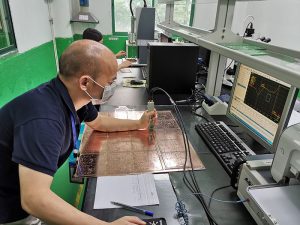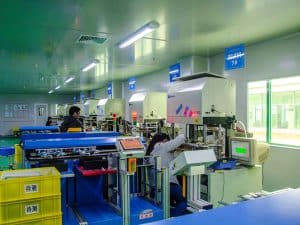Table of Contents
Toggle-300x225.jpg) What is the Difference Between PCB and PCBA?
What is the Difference Between PCB and PCBA?
In the intricate world of electronics, there are two terms that we come across quite frequently: PCB and PCBA. While they may sound similar, these acronyms represent distinct stages in the journey of an electronic device. Understanding the difference between a PCB and a PCBA is crucial for anyone involved in the electronics industry, from designers to manufacturers to end-users.Understanding the Foundation: The Printed Circuit Board (PCB)
Think of a PCB, which stands for Printed Circuit Board, as the blank canvas upon which an electronic masterpiece is created. It’s a thin, rigid laminate board typically made of fiberglass-reinforced epoxy laminate. This base material provides the foundation for electrical components to be mounted and interconnected.During the PCB manufacturing service, intricate copper patterns are etched onto the board’s surface to establish conductive pathways. These pathways allow electrical signals to flow between various components on the board. Additionally, holes are drilled through the PCB to facilitate the placement and electrical connection of components.Here at LHD Tech, we offer a comprehensive range of PCB manufacturing services, catering to various PCB types, including complex Ball Grid Array (BGA) PCBs. Whether you require single-layer or multi-layer PCBs, our expertise ensures high-quality, reliable boards that form the bedrock of your electronic devices.-300x225.jpg) Breathing Life into the Board: The PCB Assembly Process (PCBA)
Breathing Life into the Board: The PCB Assembly Process (PCBA)
Now that we have the foundational PCB, it’s time to transform it into a functional circuit. This is where the magic of the PCB assembly process comes into play.During PCBA, the different electronic components, such as resistors, capacitors, integrated circuits (ICs), and connectors, are meticulously placed in the designated locations on the PCB. This process can involve multiple techniques, including Surface Mount Technology (SMT) and Through-Hole Technology (THT).Following component placement, the crucial step of soldering firmly attaches the components to the PCB’s copper pads. We at LHD Tech utilize cutting-edge technology and stringent quality control measures throughout the entire PCB assembly process, ensuring precise component placement and reliable connections. Verification and Validation: PCB Test Process
Verification and Validation: PCB Test Process
Once assembled, a PCBA undergoes a rigorous PCB test process to guarantee its functionality and identify any potential defects. These tests can range from simple electrical continuity checks to more complex functional testing that verifies the entire circuit operates as intended. At LHD Tech, we employ a multi-layered PCB test approach that includes electrical testing, visual inspection, and functional testing. This ensures that every PCBA we deliver meets the highest quality standards and performs flawlessly within your electronic device.
At LHD Tech, we employ a multi-layered PCB test approach that includes electrical testing, visual inspection, and functional testing. This ensures that every PCBA we deliver meets the highest quality standards and performs flawlessly within your electronic device.








